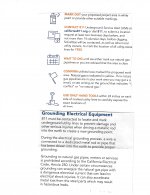If there is CSST piping coming from the meter then, IMO it needs to be bonded unless it is the special kind that doesn't need bonding, like ounterstrike
I have seen problems (i.e., fire) when unbonded gas lines are energized. Years ago I got hauled in to my first subrogation meeting after a house fire from a leak in that “magical” CSST that doesn’t need bonding.
Never had I ever had to face the possibility that my work caused a fire (I couldn’t sleep for weeks, waiting for the meeting). In my own analysis formed over those sleepless nights, I realized how vulnerable CSST can be and later wrote a paper about the matter (too long to post here).
On site, the team my insurer hired to protect “our” interests and I had already figured out the cascade that led to the fire (nothing I had done). They advised me to stay quiet; eventually the other teams discovered what we knew, and we were dismissed from the rest of the proceeding, as I had no blame. My team erased their photos and notes and left.
In that meeting (that also included engineering representatives from the manufacturer of the CSST used), I realized how this procedure is used only to assign liability for damages, not to advertise potential dangers that we might easily fix.
Like me, the manufacturer was dismissed, but only because the party responsible for the “initiating” issue had been identified. Yet, all the claims made for the safety of that gas tubing were proved wrong in that meeting … and all the evidence of that, similarly erased.
It was an eye-opener for me.




